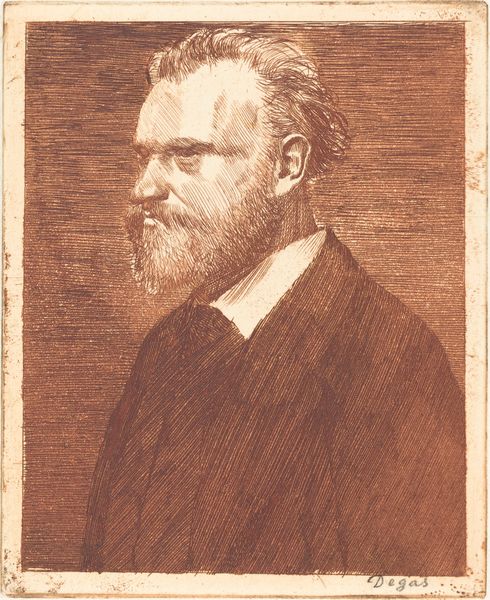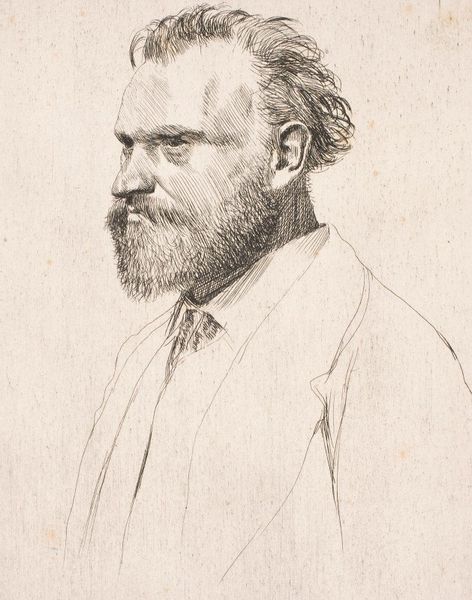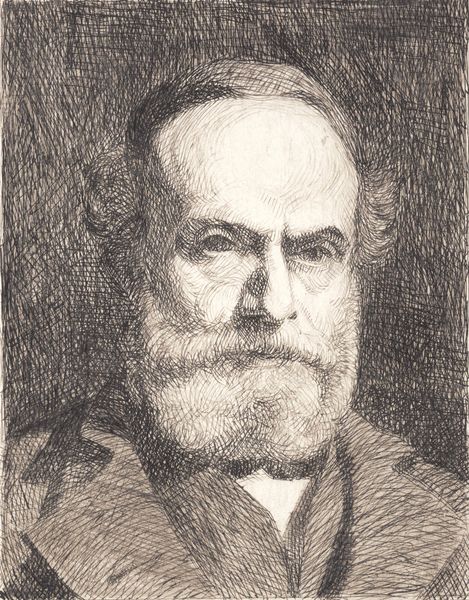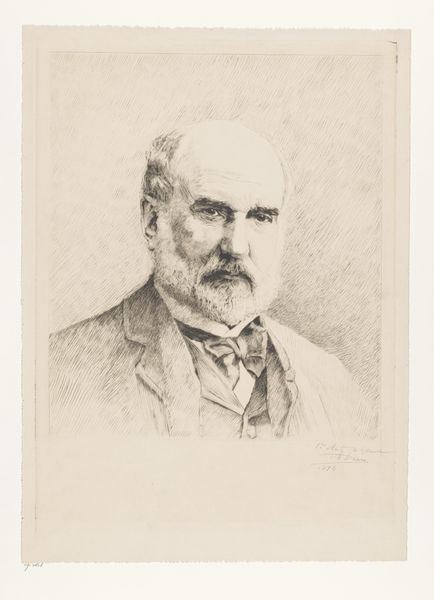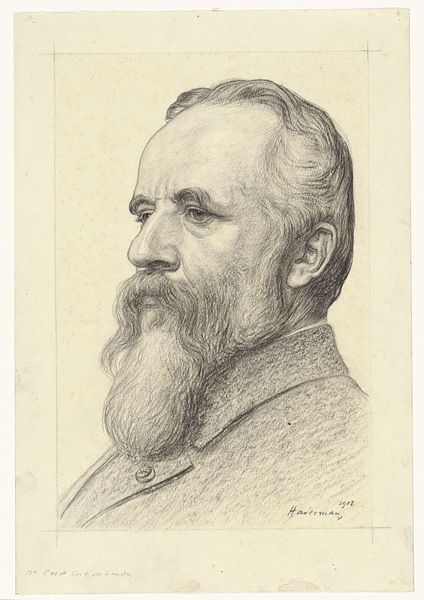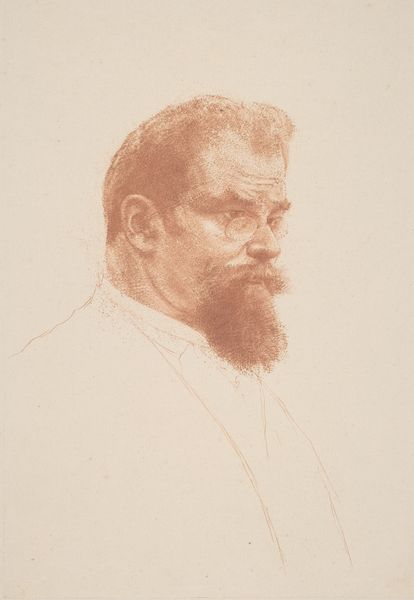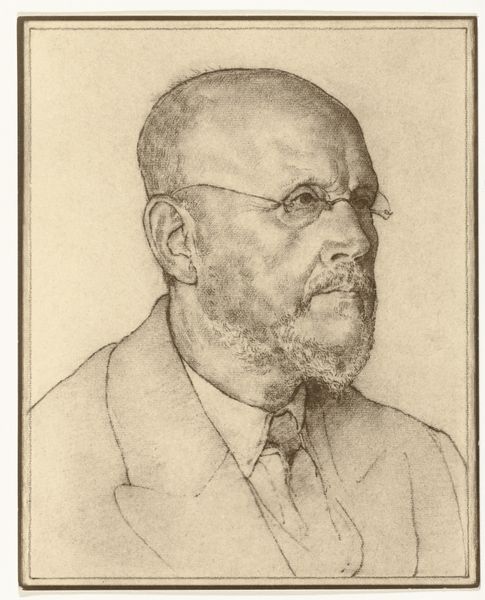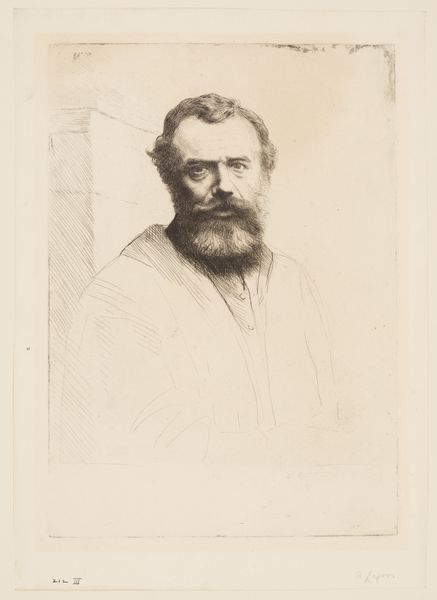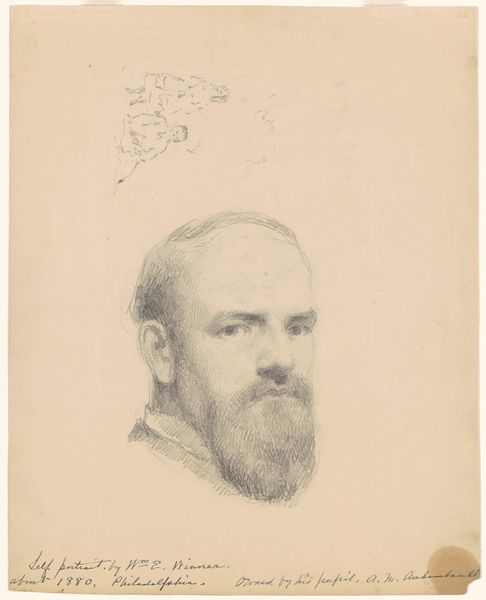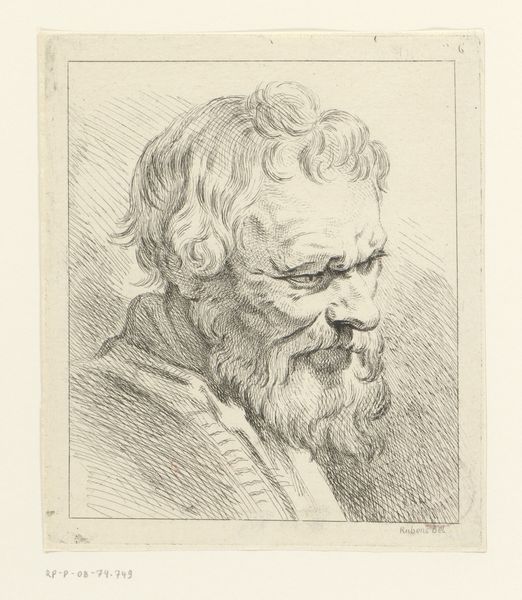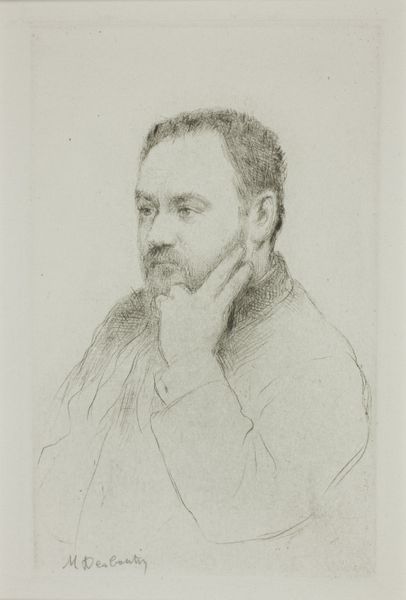
print, engraving
#
portrait
# print
#
impressionism
#
engraving
#
portrait art
#
realism
Dimensions: 313 mm (height) x 222 mm (width) (bladmaal), 130 mm (height) x 105 mm (width) (plademaal)
This portrait of Edouard Manet was etched by Edgar Degas, using a metal plate, coated with wax. Degas then drew into this surface with a sharp needle, exposing the metal beneath. The plate would then have been submerged in acid, which bites into the drawn lines. Finally, the plate is inked and printed, resulting in this image. The real artistry here is in the control of line. See how Degas varies the density and direction of hatching, to give Manet’s face volume and texture. The etching captures Manet’s likeness, but it's also very much about the graphic quality of the print itself. The medium of etching was especially important in the 19th century, as it allowed for the relatively inexpensive reproduction of images. In this way, the print participates in a wider culture of labor, commerce, and circulation, making art more widely available. Considering the historical context and the labor involved allows us to appreciate the nuances of this artwork, challenging traditional distinctions between fine art and craft.
Comments
No comments
Be the first to comment and join the conversation on the ultimate creative platform.
